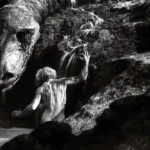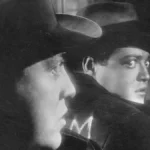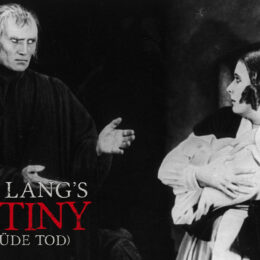THE CABINET OF DR. CALIGARI. The Dawn of Horror
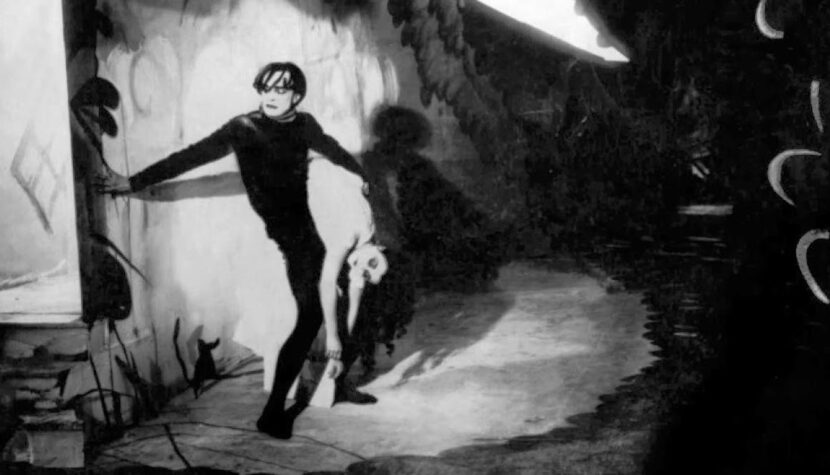
In the year 1817, Adolf Coustine wrote in a letter to Rahel Varnhagen that behind the backs of the German people, regardless of the time of day or night, whether we’re talking about a writer, composer, or an ordinary individual working hard to make a living, lies a mysterious world. A reality that, like an uninvited guest, peeks through the keyhole placed in the doors of the world of logic, dry pragmatism, and rationalism.
German spirit
The German spirit never began to believe in the slogans touted by the brightest minds of the Enlightenment era. Its roots extended much deeper – somewhere into the world of myths, legends, and tales. To a world where life isn’t solely the domain of breathing organisms. Subconsciously, every German believes that an innocuous everyday object can patiently observe its owner from behind, only to, at the right moment, with diabolical pleasure, ruin their plans. Every German is aware of the existence of “demonicity,” understood not as a noun created to describe satanic practices. Demonicity, according to Goethe’s interpretation, is a realm that reason cannot fathom. A sphere not belonging to human nature, yet somehow influencing it in an extraordinary way.
No wonder that after the defeat on the battlefields of World War I, during uncertain times plagued by hyperinflation that pushed hundreds of thousands of residents to the brink of ruin, the proud German spirit couldn’t attribute the failure solely to the world of economics and politics. Suspicions of diabolical forces’ interference were affirmed by the stars of the era, the depth psychology with its pioneer Sigmund Freud. The German nation directed its thoughts towards the past era – Romanticism – which amid tales of ghosts, demons, and mad love, between the lines, tried to smuggle in the recipe for life, a way to cope with the futility of rational reality. In the spirit of fascination with the dark, even paranoid atmosphere of Edgar Allan Poe’s or E.T.A. Hoffmann’s stories, fascination with Freud’s hypothesis of the subconscious and Carl Gustav Jung’s hypothesis of the collective unconscious, one of the first true horrors in cinema history was born – a world seen through the eyes of a madman, The Cabinet of Dr. Caligari.
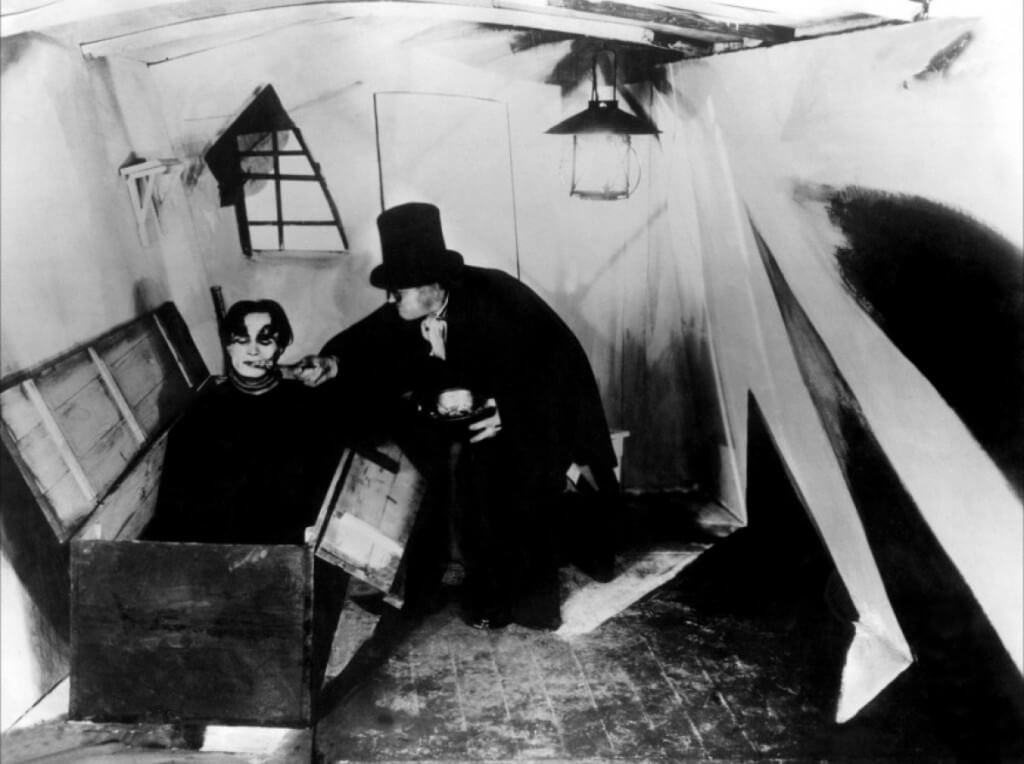
Alongside Fritz Lang’s Metropolis, which came seven years later, this film stands as the most popular offspring of the German Expressionist film movement. Nonetheless, it differs greatly from Metropolis, creating an entirely new quality and even – as critics suggest – a new style within the Expressionist movement itself, known as Caligarism. A style that allowed the scriptwriters – Carl Mayer and Hans Janowitz – to create the first film in the history of cinema that so meticulously, fully, and consciously constructed an alternative reality. A negation of the everyday world, an emanation of the German spirit pondering what to do after the spectacular downfall of all ideals supposedly promoted by representatives of the era of pure reason.
The director chosen was Robert Wiene (some sources state that he was chosen because Fritz Lang was busy making his adventure film, Spiders, at the time). The production was overseen by Erich Pommer and Rudolf Meinert (Pommer’s contribution is often overestimated today, overshadowing the role of Meinert). For the main roles, they enlisted future icons of German cinema from the 1920s – Werner Krauss and Conrad Veidt from Max Reinhardt’s theater group. The whole was complemented by artists responsible for the set design – Hermann Warm, Walter Reimann, and Walter Rohrig (all part of the Expressionist group of artists active in Berlin).
Related:
Through the eyes of a madman
And it was precisely this last trio that contributed the most to creating the legend of The Cabinet of Dr. Caligari, creating decorations in the spirit of the era, reminiscent of a world distorted by the ecstasy and fear of a madman’s mind. On large canvases, rows of houses were painted that defied all the principles of contemporary architectural thought. Among them, you’d find no right angles or straight lines. Cornices aggressively reached towards the sky, only to silently break halfway and then dive downwards. At a certain point, they reached the outline of the wall, which leaned to the side like a fragile tree buffeted by a strong wind. However, the wall has no intention of collapsing like the mentioned plant. Its curvature in the world surrounding the characters seems natural, fully justified. Between these diabolic dwellings creep winding streets, full of twists and shadows. The artists from “Der Sturm” gave them a second life multiple times – extending their winding ends on vertical canvases surrounding the tightly sealed atelier. Lanterns based on the triangle figure appear everywhere, yet far from any regularity in their shape. Doors resembling coffin lids open at various angles, misshapen frames menacing the viewer with dozens of sharp angles. A cityscape resembling a caricature of the biblical Tower of Babel and the omnipresent blackness reigning over the elements of white. This is the vision of Warm, Reimann, and Rohrig. The question is – where did this idea come from?

It was born in the minds of this trio after reading the script provided by – importantly – Meinert, not Pommer. Noticing that the executive producer sought advice regarding the script from a group of visual artists, we can see how significant their role was on the film set during the Weimar Republic era. The members of “Der Sturm” immediately started sketching scenic design concepts to present to Meinert and Wiene the next day. The director agreed right away with the proposals presented by the group. Meinert – prudently – asked for a day to think it over, eventually conveying the significant words to the decorators: “Create these decorations for me in the most bizarre style possible.” There is also Pommer’s account, emphasizing the financial aspects of The Cabinet production. He describes the stance of Warm, Reimann, and Rohrig – full of enthusiasm for formal experiments – and the suggestion of creating painted decorations on canvases. He sums up by stating that this form of scenography suited both the artists, offering creative opportunities, and him – canvases were of course much cheaper than decorations made from synthetic materials.
The world painted on canvas reflects – in line with the Expressionist doctrine – the collective soul of the nation, but it is also – the second path of interpretation – a reflection of the world seen through the eyes of a madman. Delving a bit deeper, we can see that these two paths merge at the point we mentioned at the beginning. They converge at the point of demonism. It’s precisely this that makes each of us a bit of a madman. This is confirmed by the film’s advertising slogan – after all, if we see the world through a madman’s eyes and perceive it through our own eyes, then we are somewhat lacking in reason ourselves.
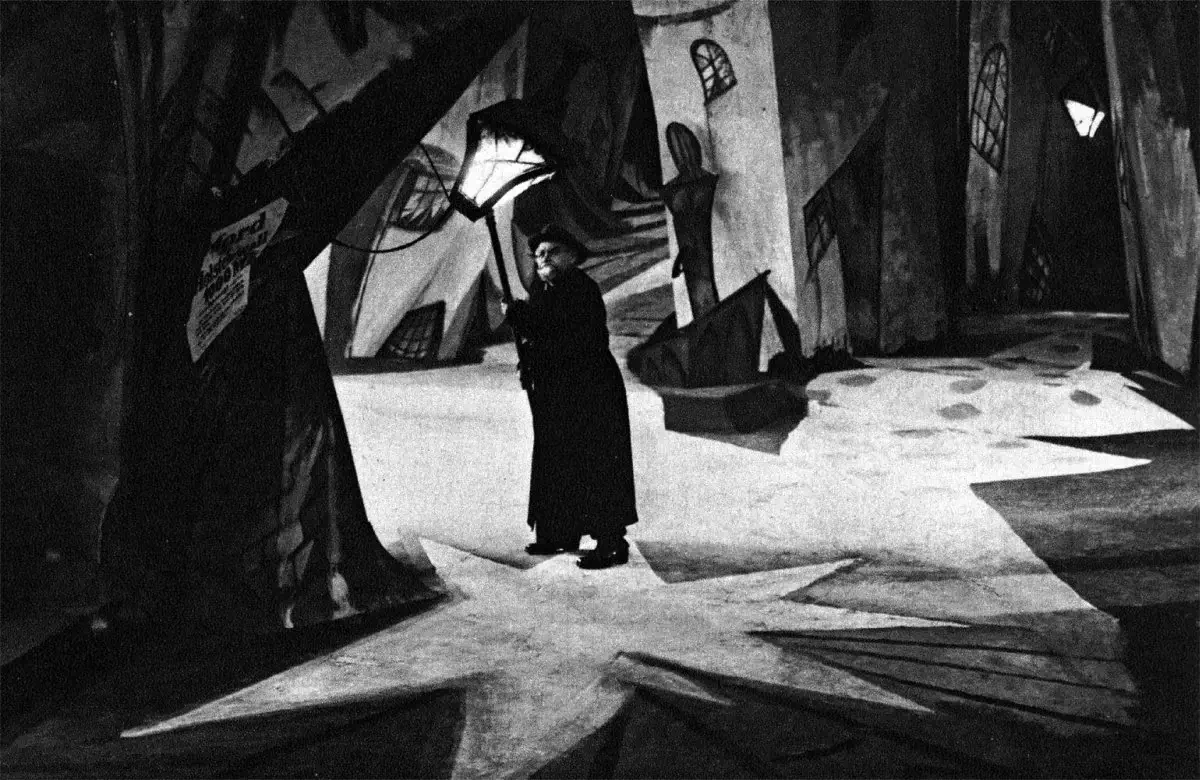
Set design
Nonetheless, the set design doesn’t merely reflect the image of society on a philosophical level. Both the decoration itself and the costumes of the characters oscillate between deep blacks and pristine whites. We witness the characteristic contrast of Expressionist poetics in The Cabinet of Dr. Caligari, best seen during the moment of Jane’s abduction by Cesare (Cesare – evil, portrayed by his raven-black attire; Jane – innocence, symbolized by her immaculate white gown). Translating the relationships between characters through contrast most likely stems from the doctrinal principles once laid out by Paul Wegener (the creator of The Golem), wherein he noted that cinema should be liberated from literature or theater and start relying on the visual language itself – to create an image that speaks for itself.
Distinctive of the movement are the elevated seats of the upper class representatives – of course, they aim to elevate them above the common breadwinners, but – it seems certain – they also serve a parodic function. After all, excessive hyperbole tends to lead to humor. It’s also worth noting how the set design interacts with the emotional state of the characters in the narrative. For this purpose, let’s recall the scene in which the wrongly accused rogue sits in his prison cell bound in heavy chains.
Notice that all the black lines (decorating or defacing the cell like a nightmare) converge from above, towards the prisoner. As if they are pointing at him, aiming their sharpened ends at his wretched person. Somewhere above him, one of those unusual and menacing windows lurks, seemingly placed there only to vex him. It’s too high for him to look into, too high for him to escape through. It simply exists, nothing more. The prison decor therefore reflects the mental state of the falsely imprisoned prisoner. Here, all the forces of evil (symbolized by the black architectural elements) converge towards him, unjustly accusing. Somewhere in his mind, the desire for escape still lingers, activating the defense mechanism, but the shackles eliminate the possibility of any maneuver (symbolizing the unreachable window).
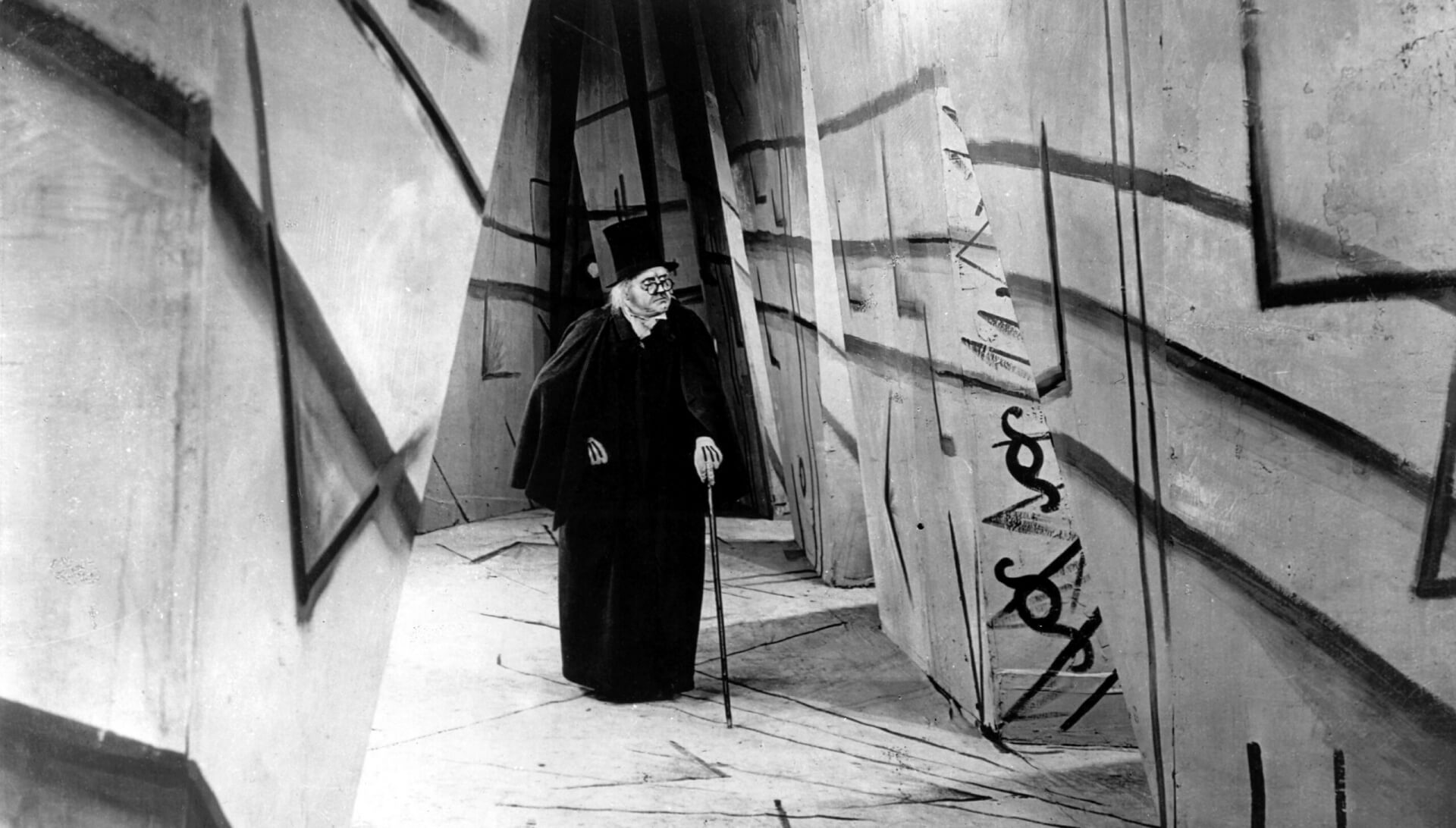
Furthermore, it’s worth noting the influence that Max Reinhardt’s theater had on the artists of the “Der Sturm” group, which triumphed in post-war Germany. Reinhardt himself strongly opposed the philosophical layer of Expressionism, but stylistically, it was his theater that influenced the creators of this new movement. It was from his stage that the fascination with light and shadow and innovative use of decoration emerged. The idea of breaking the duality between the stage and the viewer. Visions of haunted cities, ominous houses, and diabolic alleys appeared in previous eras, as seen in the works of Ludwig Tieck and later in Meyrink’s famous Golem.
Closing the discussion on set design, I mentioned Max Reinhardt’s theater. It was from his sphere of influence that Krauss and Veidt – Doctor Caligari and the somnambulist Cesare – came onto the film set. Only these two truly captured the atmosphere imposed by the Expressionist decorations. While other actors don’t shy away from theatrical facial expressions full of uncontrolled grimaces, energetic hand gestures, or artificially appearing bursts of emotion, Krauss and Veidt seem almost like elements of the set design, occasionally emerging from the menacing walls to claim their own and then return to their place of rest. Their movements are minimized (within the conventions of the 1920s), and in contrast to the city’s rabble, they immediately appear different, foreign, menacing. Moreover, they create iconic characters for the movement – figures emerging from the Expressionist fascination with psychologically disturbed, mechanically evil individuals. People who can kill cold-bloodedly merely to fulfill their delirious objectives, which – often – turn out to be a desire for destruction. In a single sentence – together with the eyes of the somnambulist Cesare – they open the eyes of the horror film, which will return in a few years with Murnau’s Nosferatu.
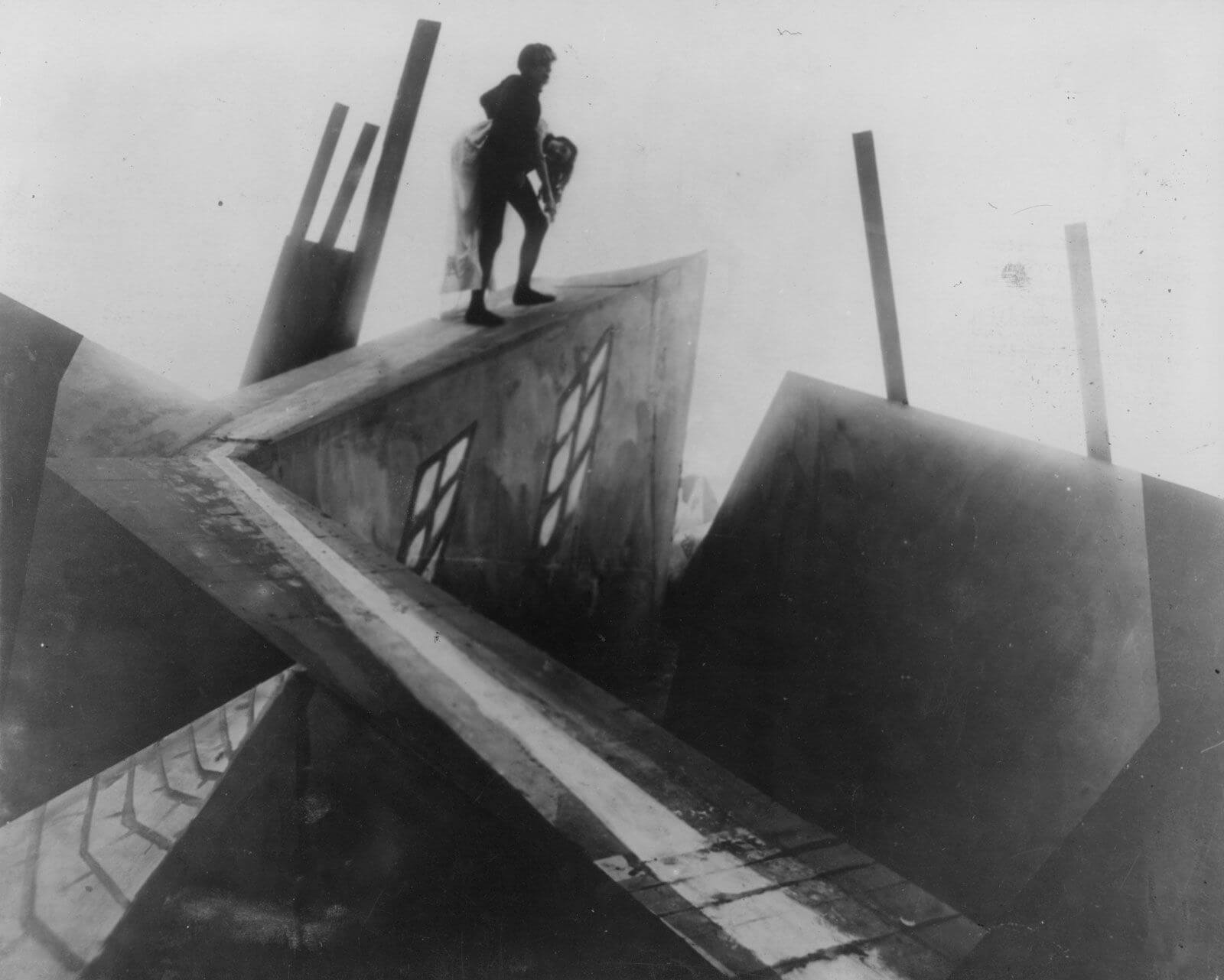
The plot
Regarding the plot itself (which I refrained from summarizing due to its diminished importance compared to the film’s other aspects), an interesting fact is that its sociological message, which was straightforwardly expressed in its original form, had to be altered. The prologue and epilogue, enclosing the entire narrative within the confines of the patient’s walk within a mental institution’s courtyard, were added after the completion of the initial screenplay. Without the addition that shifted the story into the strange world of an asylum resident, the narrative was intended as an attempt to depict the social authority of the time, the psychiatric doctor, in an extremely unfavorable light. The learned doctor was to be portrayed as a juggler, employing his power for diabolical tricks. Therefore, The Cabinet of Dr. Caligari was intended, in addition to being a horror, to criticize bourgeois and middle-class society (Expressionism was deeply influenced by the writings of Friedrich Nietzsche). Criticizing a society that, while proclaiming enlightened ideals, allowed for the outbreak of a bloody war. A war in which, amidst the mangled bodies, the proud German spirit – the spirit of Goethe and Schiller – also perished.
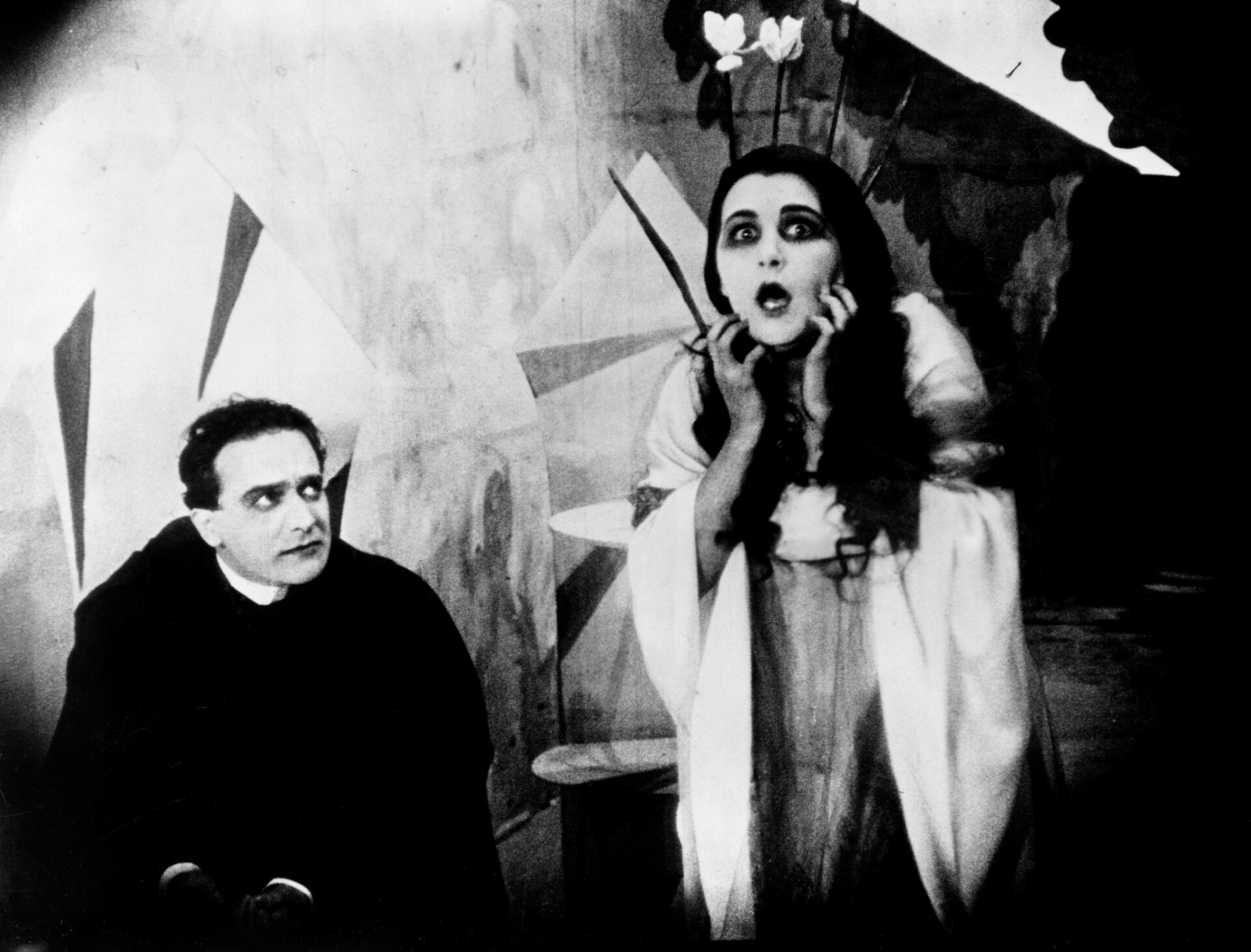
Despite its undeniable impact on both Expressionist cinema and cinema as a whole, The Cabinet… was also met with substantial criticism. Regarding its ideological stance, the most famous work offering a pejorative view of the film, and Expressionist cinema as a whole, is Siegfried Kracauer’s study From Caligari to Hitler. The title speaks volumes – the work presents German Expressionist cinema as a movement seeking a leader, a demonic force capable of lifting Germany and leading it to greatness. With the benefit of hindsight, we know that a certain leader emerged.
In contrast to Kracauer, there’s Lotte H. Eisner – the author of the monograph on Expressionism titled The Demonic Screen. In her view, it was a momentous time in the art of the German nation, a phase of film that posed one of the greatest challenges in the history of the medium. Through Expressionism, film proved to itself that it could forsake its strongly mimetic assumptions and create dreamlike, artificial worlds. However, the triumph of Expressionism isn’t found in the famous cabinet; instead, Eisner finds it in Murnau’s work. To some extent, she criticizes Wiene’s film for leading German cinema down a dead-end road that ends as soon as the final shot of the cabinet disappears from the screen. She presents Caligarism as a secondary form of expression compared to outdoor cinema. She notes that true art lies in extracting horror and uniqueness from the real world, not from artificially prepared canvases in a studio. Furthermore, she points out several films that clumsily imitate Caligarism’s style – Genuine, Raskolnikov… Many critics also point out the inconsistency of the decoration. Amidst the diabolical canvases, we see ordinary furniture, objects. The question is whether the presence of elements from the real world is an oversight on the part of the “Der Sturm” artists or a deliberate technique aiming to convey the message – this is how our world looks after demolishing the artificial facade of daily life.
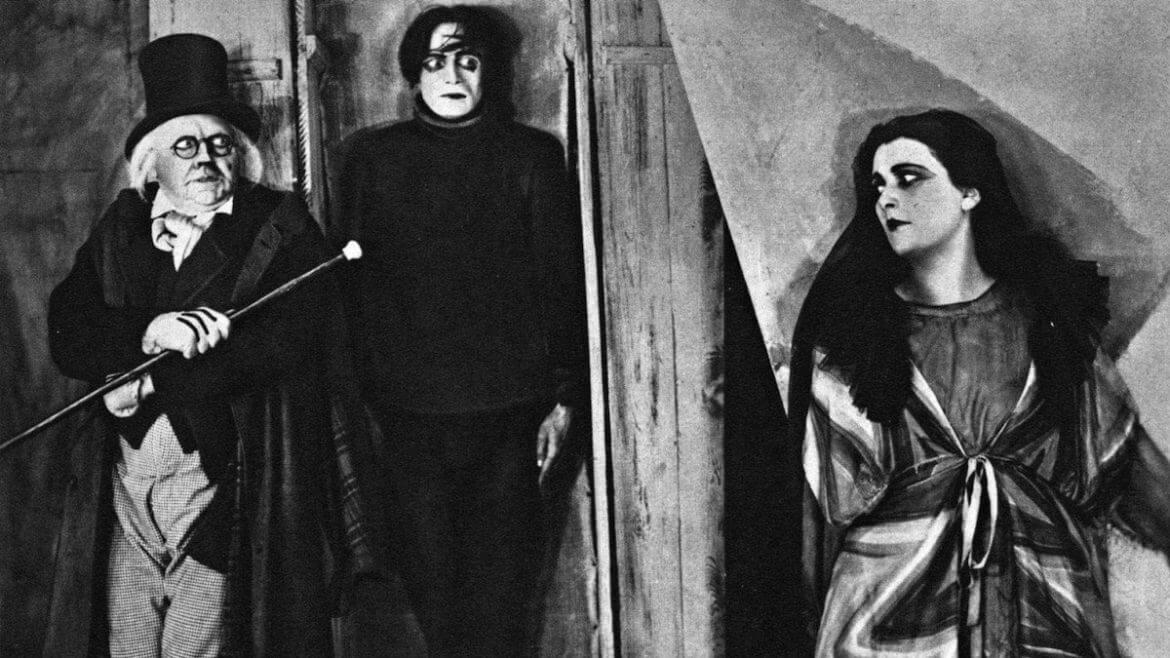
Regarding the criticisms from Kracauer, Eisner, or any other critic, I must personally engage with them. In my opinion, Kracauer’s analysis is simply misguided – it’s an ahistorical overinterpretation, occasionally accurate, but overall lacking deeper meaning. I only agree with Eisner when she mentions the dead-end path that Caligarism represented. Caligarism shone fully only once, and with each subsequent film, it evolved into self-parody. The impression left in my memory after watching The Cabinet of Dr. Caligari will remain there for a long time, as it marked the beginning of my acquaintance with German Expressionist cinema. So far, only one film from this movement was able to surpass the story of the somnambulist and the mad doctor – Fritz Lang’s Destiny. However, that’s a story for another time. I wholeheartedly recommend visiting a theater with a large screen and seeing the world through the eyes of a madman, a perspective that each of us, regardless of time and nationality, carries deep within.



